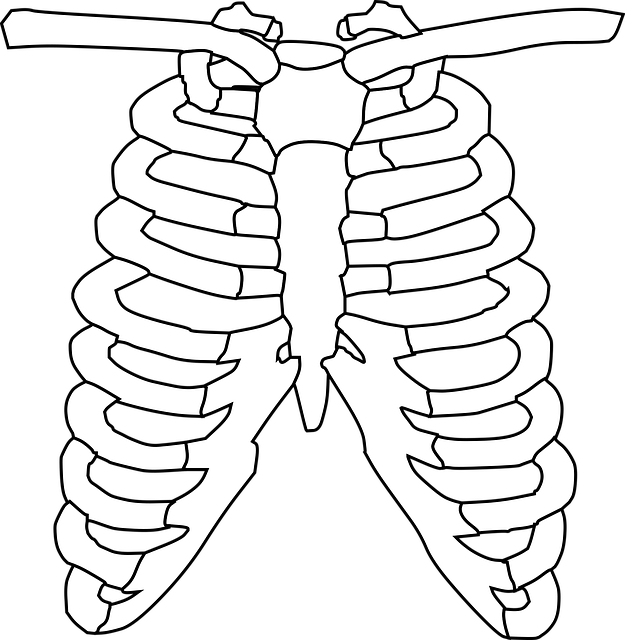Iodinated contrast agents (ICAs) are essential for modern medical imaging, enhancing X-ray and CT scans. Researchers focus on improving ICA safety, reducing side effects, and image quality through innovative formulations, particle size manipulation, and alternative compounds. Future developments aim to minimize ICA risks, improve biocompatibility, and enable targeted delivery systems, benefiting CT, digital radiography, and AI-assisted image analysis.
“The field of medical imaging is continually evolving, and advancements in X-ray contrast media play a pivotal role in enhancing diagnostic capabilities. This article explores the future prospects of iodinated contrast agents (ICAs), delving into their current landscape, innovative formulations for improved resolution, and strategies to minimize associated risks. By focusing on these aspects, we aim to highlight how ICAs will drive the next generation of medical imaging technologies.”
Iodinated Contrast Agents: Current Landscape
Iodinated contrast agents (ICAs) are a cornerstone in modern medical imaging, particularly for X-ray and computed tomography (CT) scans. These agents enhance the visibility of blood vessels, tissues, and organs by improving X-ray attenuation, leading to more accurate diagnoses. The current landscape of ICA development is marked by continuous efforts to improve safety, reduce side effects, and enhance imaging quality.
Today, ICAs are predominantly based on iodine, with various chemical structures designed for specific applications. Iodine’s high density in X-rays makes it an effective contrast agent. However, concerns about potential toxicity, especially with excessive use, have spurred the search for safer alternatives. Researchers are exploring novel compounds and delivery methods to address these issues while maintaining or improving diagnostic performance.
Advancing Formulations for Enhanced Resolution
The development of advanced X-ray contrast media is an exciting area of research, with a focus on improving resolution and image quality in medical diagnostics. One key aspect is the formulation of new iodinated contrast agents (ICAs), which play a vital role in enhancing the visibility of internal structures. Scientists are exploring innovative ways to optimize the chemical composition and physical properties of ICAs, aiming for higher contrast and improved spatial resolution.
These advancements involve tailoring the size and shape of ICA particles, incorporating special coatings, and experimenting with different solubilization techniques. The goal is to achieve finer detail in imaging, allowing radiologists to detect subtle abnormalities and make more precise diagnoses. By refining the formulations, future X-ray examinations may offer enhanced visual clarity, ultimately improving patient care and treatment outcomes.
Minimizing Risks: Safety and Biocompatibility
Minimizing risks associated with X-ray imaging is a key focus in the development of future contrast media. Iodinated contrast agents, commonly used in diagnostic procedures, have been the subject of extensive research to enhance their safety and biocompatibility. Efforts are directed towards reducing potential adverse effects, such as allergic reactions and kidney damage, which can be caused by these agents.
Advancements in chemistry and material science aim to create more biocompatible formulations that minimize interactions with body tissues while optimizing the contrast enhancement for better diagnostic accuracy. This involves exploring alternative iodine sources, improving agent solubility, and designing molecules that are quickly eliminated from the body, thereby reducing overall exposure and potential risks.
Future Applications in Medical Imaging
The future of medical imaging holds immense potential with advancements in X-ray contrast media. Researchers are exploring innovative formulations that can enhance image quality and provide more detailed insights into various physiological processes. One promising area is the development of advanced iodinated contrast agents, which have long been the cornerstone of X-ray imaging. These agents are expected to become even more sophisticated, offering improved safety profiles, targeted delivery systems, and enhanced visibility for better diagnostic accuracy.
New technologies such as computer-aided tomography (CT) and digital radiography will further benefit from these advancements, enabling more precise diagnoses and personalized treatment plans. Additionally, the integration of artificial intelligence (AI) in image analysis can revolutionize how medical professionals interpret X-ray images, making it an exciting time for the field of diagnostic imaging.
The future of medical diagnostics looks bright with continuous advancements in X-ray contrast media, particularly iodinated contrast agents. By refining formulations for improved resolution and prioritizing safety and biocompatibility, healthcare professionals can leverage these enhanced agents to deliver more accurate and comprehensive patient assessments. This progress promises to expand the scope of medical imaging, ultimately benefiting patient care and outcomes.
